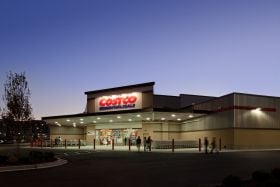Retail Infill Opportunities Drive Strategic Decisions
In the midst of these troubling times, some retailers have managed to not only survive but benefit from America’s economic woes.

Retailers Move
Quickly, But Carefully, In Planning for the Future
Reorganization, consolidation, bankruptcy, liquidation… all frightening but possible outcomes for countless American businesses struggling to survive in today’s tough marketplace. And you don’t have to be an economist to know that America’s retailers have been hit particularly hard by the U.S. economy’s three-year recession.

Costco/Brookhaven, Georgia
The nation was shocked when strongholds like Circuit City—once America’s second-largest electronics retailer—Goody’s and KB toys closed their doors for good as penny-pinching consumers flocked to the big-box discounters for savings on electronics, clothing and toys. Countless others consolidated stores, leaving dark cavities throughout America’s malls and shopping centers. But what has been one retailer’s proverbial nail in the coffin has been another’s golden opportunity.
Closures Bring About Infill Opportunities
“What I’ve been seeing in the construction world is that as you see consolidations in department stores, as you see some of the medium boxes falling out of the picture like Circuit City, that there is real estate coming available that may not have been available in the past,” said Todd Thull, assistant vice president of construction for Costco, the third largest retailer in the U.S. “We could not fit in a Circuit City site, but we could probably fit in a traditional department store site. There are a number of dark department stores as a

Costco celebrates a grand opening
in Brookhaven, Georgia
result of consolidations and bankruptcies. traditional regional shopping malls may be an increasing opportunity for us.”
While big-box retailers like Costco are taking advantage of infill opportunities across the u.s., they aren’t the only ones feeding off the recession’s leftovers. Mid-sized retailers with a strong international market base have managed to not only survive, but thrive, throughout the economic
downturn.
H&M, a European fashion retailer, has 2,200 stores spread across 38 countries, but just 10 percent of those are located in the United States. According to Rajnesh Singh, the company’s director of construction, this is precisely why H&M has fared so well over the past few years.
“We’ve had a consistent, sustainable growth strategy and the good thing is, our business is not linked to any one local economy,” explained Singh. “So, if things are rough in the U.S., we have other markets that can offset some of the weakness in certain markets…. softness in one area can be compensated to some degree with above-average gains in another.”

H&M, Las Vegas, Nevada
And, like Costco, H&M has taken advantage of the infill opportunities left behind by the unfortunate casualties of the recession.
“Some would say that this is a down time, but others might counter that by saying this is actually a good time if you are growing a business because of favorable lease terms and the opportunity to get good spaces,” said Singh.
Economic Conditions Demand Renewed Diligence in Project Decisions
While both Thull and Singh have seen benefits for their respective companies, they have not been spared some hardship due to the recession. For example, Thull says he has had to weed through an influx of proposals from subcontractors who have turned out in droves to bid on work. Under normal circumstances, competition among subcontractors is good for
driving down costs. But, in this case, too much competition has driven some to lose sight of what makes good business sense.
Bob Moore, president of Gray-I.C.E Builders and a newly elected Retail Contractors Association board member, says the problem has required him and his team to be much more diligent when prequalifying subcontractors.
“We’ve had, in essence, to double the guard at the gate with subcontractor prequalifications over the last couple of years,” said Moore. “It’s certainly something we’ve identified as one of our biggest areas of risk—subcontractors bidding potentially below cost to have a revenue stream that they thought would bridge themselves to the other side when there’s a nice recovery or more prosperity. Yet, in reality, they were cash-flowing themselves out of business.”
Commodity Prices Rising With Globalization
But both Thull and Moore agree that increasing commodity prices is the biggest challenge retailers will face as they plan for growth in the coming years. Moore says this is, in large part, due to increased globalization. “The total of emerging markets’ Gross domestic Product will, for the first time in history, exceed the combined Gross domestic Product of developed nations,” explained Moore. “Their consumption and demand for raw materials, precious metals, etc., will drive up costs for us.”
A harsh reality, indeed, but Moore believes it is the responsibility of the general contractor to help retail customers adjust to inflation and keep their expansion and construction projects on track.
“The strategy to counter inflation is to build as fast as you can because the cost will definitely be going up,” said Moore. “We’ve been as lean as we can be the last couple of years. We try to add value to our retail customers by giving them feedback on the methods and materials they choose because they buy a lot of the materials for their stores. We try to give them suggestions and feedback on the cost, the durability, the maintainability, the cost of energy and try to be a partner with them to make the process as lean as possible.”
- Category:
- Corporate News
Some opinions expressed in this article may be those of a contributing author and not necessarily Gray.